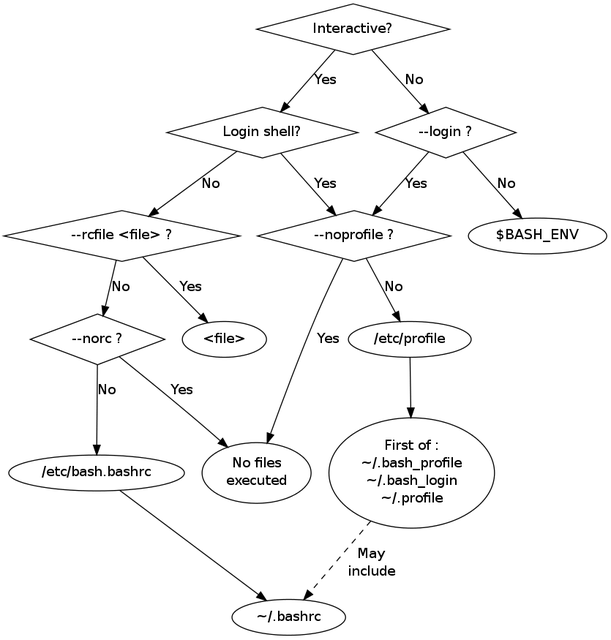Why does something work in my SSH session, but not in Capistrano?
This is possibly one of the most complicated support questions that can be asked, the only real answer is it depends.
It’s really a question of which kind of shell Capistrano is using, it’s a
matrix of possibilities concerning login, non-login, interactive, or
non-interactive.
By default Capistrano always assigns a non-login, non-interactive shell.
Shell Modes
Unix shells can be started in one of three modes, an unnamed basic mode,
which almost never happens, as a login shell, or as an interactive shell.
Depending which mode a shell starts in (and which shell you are using) this will affect which startup (more commonly known as dot-files) files, if any are loaded, here’s more or less the matrix of what is loaded when.
What about the Capistrano option to assign a pty?
This option has been hugely misleadingly used, if you ask SSH to provide a
pty you are effectively telling SSH that “I’ll connect this session to a
user terminal”, thus programs on the receiving end expect that they can prompt
for input, and provide coloured output, etc. In short they think they’re
talking to you over an interactive session, because by assigning a pty, Bash
has been started in non-login, interactive mode.
Read more about this:
- In the “Bash Startup Files” section of the Bash manual
- At Sam Stephenson’s excellent Unix shell initialization wiki page
- Interactive and non-interactive shells and scripts documentation
How does what Capistrano does differ from an SSH session
By default Capistrano prefers to start a non-login, non-interactive shell, to try and isolate the environment and make sure that things work as expected, regardless of any changes that might happen on the server side.
In contrast when you log into a machine with your terminal, into a regular
Bash session, the --login option to Bash is implied granting you a login
shell, and because you are in a terminal, ssh asks the ssh server to provide a
pty so that you may start an interactive session. Thus you get an interactive
login shell, the exact opposite of what we need for Capistrano!
How can I check?
I actually had to look this up, most of the time it’s common sense, but stackoverflow to the rescue, let’s figure this out!
First, we’ll try a real SSH session, logging in via our terminal, and seeing what happens:
me@localhost $ ssh me@remote
me@remote $ [[ $- == *i* ]] && echo 'Interactive' || echo 'Not interactive'
Interactive
me@remote $ shopt -q login_shell && echo 'Login shell' || echo 'Not login shell'
Login shell
Contrast that with what happens when we hand the command to run to the SSH command line without logging in first…
me@localhost $ ssh me@remote "[[ $- == *i* ]] && echo 'Interactive' || echo 'Not interactive'"
Interactive
me@localhost $ ssh me@remote "shopt -q login_shell && echo 'Login shell' || echo 'Not login shell'"
Not login shell
Here we can see that Bash is still starting in interactive mode when we’re just running a single command, that’s because the terminal we are using is interactive, and SSH inherits that and passes that on to the remote server.
When we try the same with Capistrano we’ll see yet another set of results; we can have a very simple, Capfile, we don’t even need to load the default recipes to test this:
# Capistrano 3
task :query_interactive do
on 'me@remote' do
info capture("[[ $- == *i* ]] && echo 'Interactive' || echo 'Not interactive'")
end
end
task :query_login do
on 'me@remote' do
info capture("shopt -q login_shell && echo 'Login shell' || echo 'Not login shell'")
end
end
Gives us the following:
me@localhost $ cap query_login
INFO Not login shell
me@localhost $ cap query_interactive
INFO Not interactive
Which shell startup files do get loaded?
Best explained with this diagram, yes it’s that complicated:

Source: http://www.solipsys.co.uk/new/BashInitialisationFiles.html
